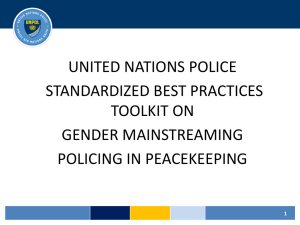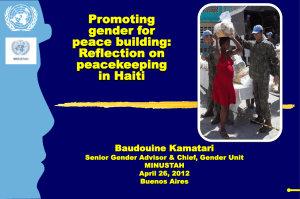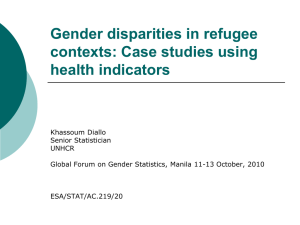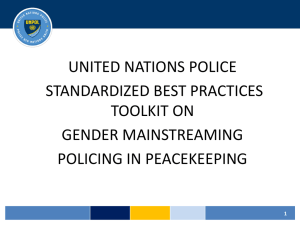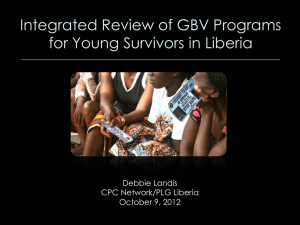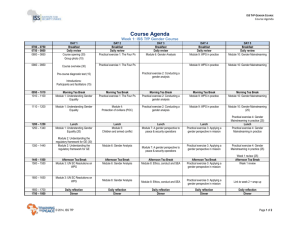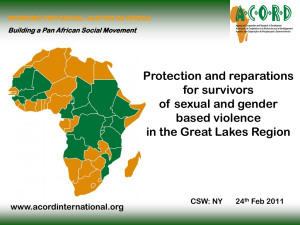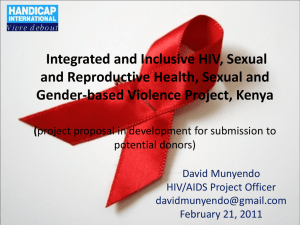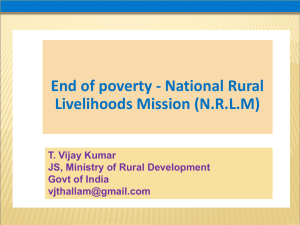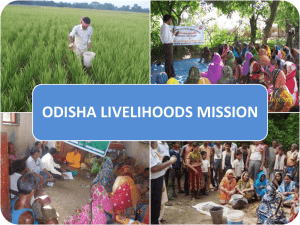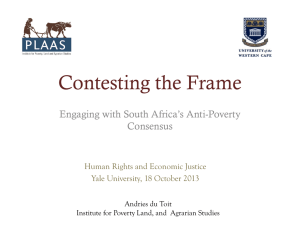Natural Capital
advertisement
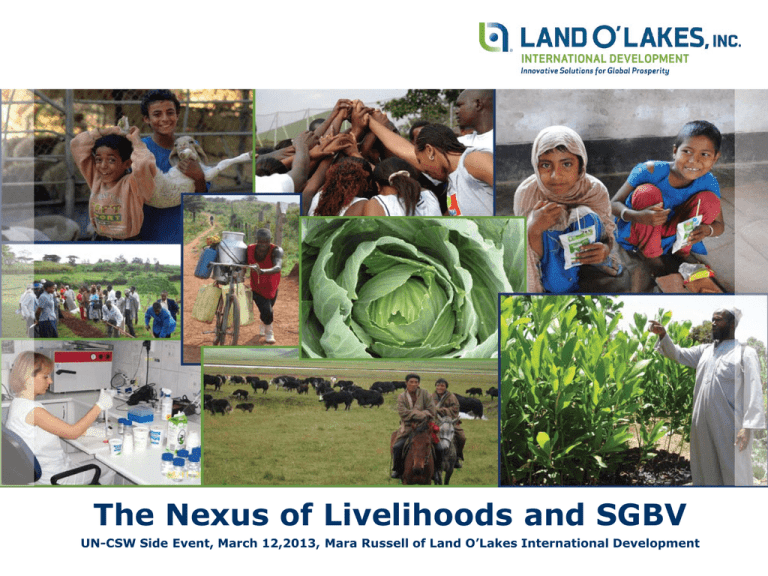
Verdana 28 pt The Nexus of Livelihoods and SGBV UN-CSW Side Event, March 12,2013, Mara Russell of Land O’Lakes International Development Livelihoods are Impacted by SGBV • Reduction of women’s self-esteem and agency needed to make independent decisions • Loss of essential assets (capital), which are the “building blocks” of livelihoods: Human Capital: health, education, skills Productive Capital: tools and owned/managed resources that enable livelihoods Social Capital: relationships within a community or society that enable commerce Financial Capital: monetary wealth that enables investment in other types of capital (human capital, productivity) Natural Capital: natural resources that support lives and livelihoods Asset Stripping: Essential to SGBV • “Asset Stripping” (In the context of disasters and conflicts): Unsustainable sale of assets at a loss Depletion of natural resources or assets due to high degree of exposure to a shock or disaster • SGBV in a woman’s life can be equivalent to the impact of a disaster! • It doesn’t just impact a woman’s life, but an entire household (and may have community impacts) • May underlie chronic poverty What is lost with SGBV: Assets needed for livelihoods Human Capital Productive Capital Financial Capital Social Capital Natural Capital Asset Stripping: Essential to SGBV • Loss of Human Capital: Negative impacts on women’s and children’s physical and mental health; handicaps - women’s inability to care for children, illness, depression in women reduces agency and self-esteem • Loss of Productive Capital: Theft of land, livestock from widows(Izumi, 2007), access to land (sometimes children) removed due to divorce, return of bride price by parents of SGBV accusers (ACFODE, LVCT, 2012) Asset Stripping: Essential to SGBV • Social Capital: Both intimate partner and public violence against women requires impunity, acceptance and protection of perpetrator, divorce may result in isolation and loss of social connections • Financial Capital: SGBV has been found to be positively correlated to women’s employment (Morrison and Orlando, 2004) Uptick in SGBV at harvest in Zambia – arguments over use of funds from crop sales Women who travel for business are vulnerable SGBV increased with promotion of savings & loan groups in Bangladesh (Kelkar, 2005) SGBV did not automatically decrease with microcredit interventions (Kim, et. al., 2007) Sexual harassment continues in work places throughout the world Asset Stripping: Essential to SGBV • Natural Capital: Conflicts over grazing rights, water, and depletion of natural resources due to unsustainable activities impact women’s ability to engage in livelihoods and care for their families Cause: Rights, Roles, Responsibilities “Unequal gender relations distribute the burden of poverty disproportionately on women. They can also be the cause of poverty among women and girls in non-poor families. These unequal relations…need to be addressed both as a cause and as a factor in the intensification of poverty.” (Kelkar, 2005) Ensuring Sustainability Requires a Shift in Underlying Power Relations • Providing credit, assets and training to women will not matter if they continue to be victims of SGBV: Essential: build women’s agency and self-esteem Essential: build respect among intimate partners, male community members and leaders Essential: women in leadership roles, act as role-models for girls How to Bring About the Shift • Ensure women have a support group: A “women’s group” they can work and grow with: Care Groups, Coops or Production & Marketing Groups, Saving & Loan Groups • Foster education, training and attainment for girls and women on par with men’s & boy’s: Train men and women together • Ensure women’s participation in decisionmaking: in communities, coops, businesses, and government • Shift ownership patterns so that “his” and “hers” become “ours” • Build access to justice and redress Dare to Challenge Culture! Human Capital Productive Capital Financial Capital Social Capital Natural Capital
